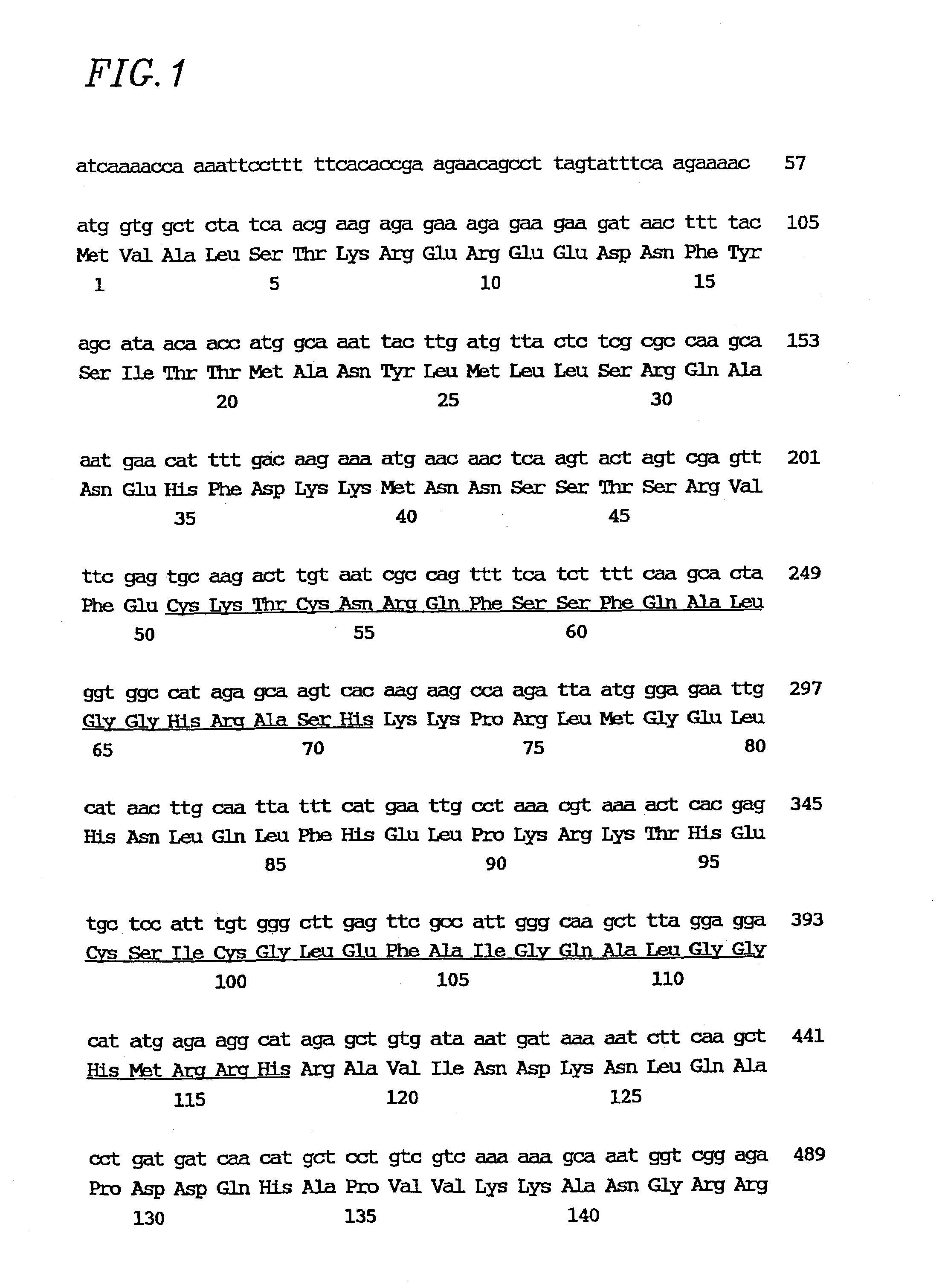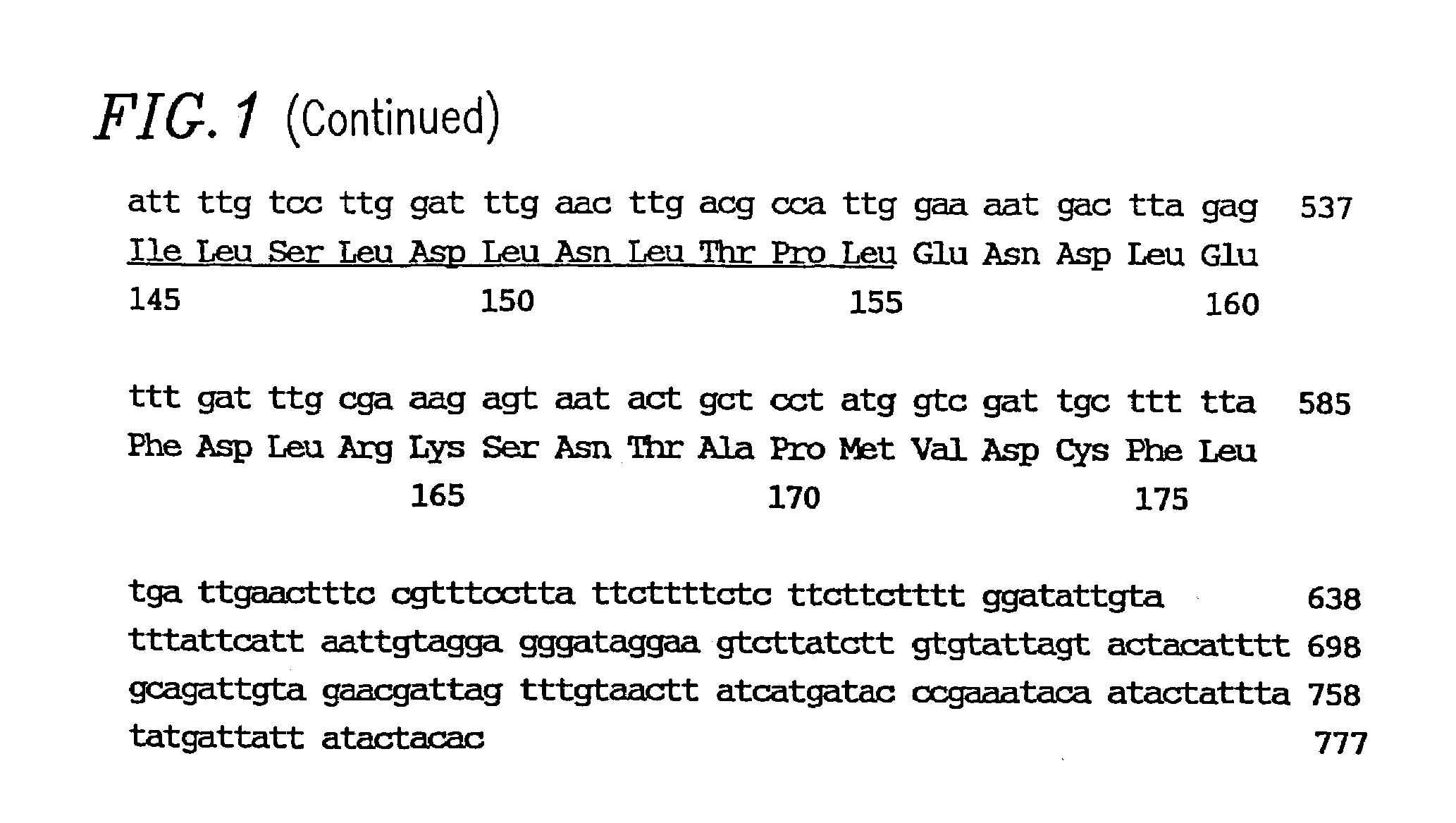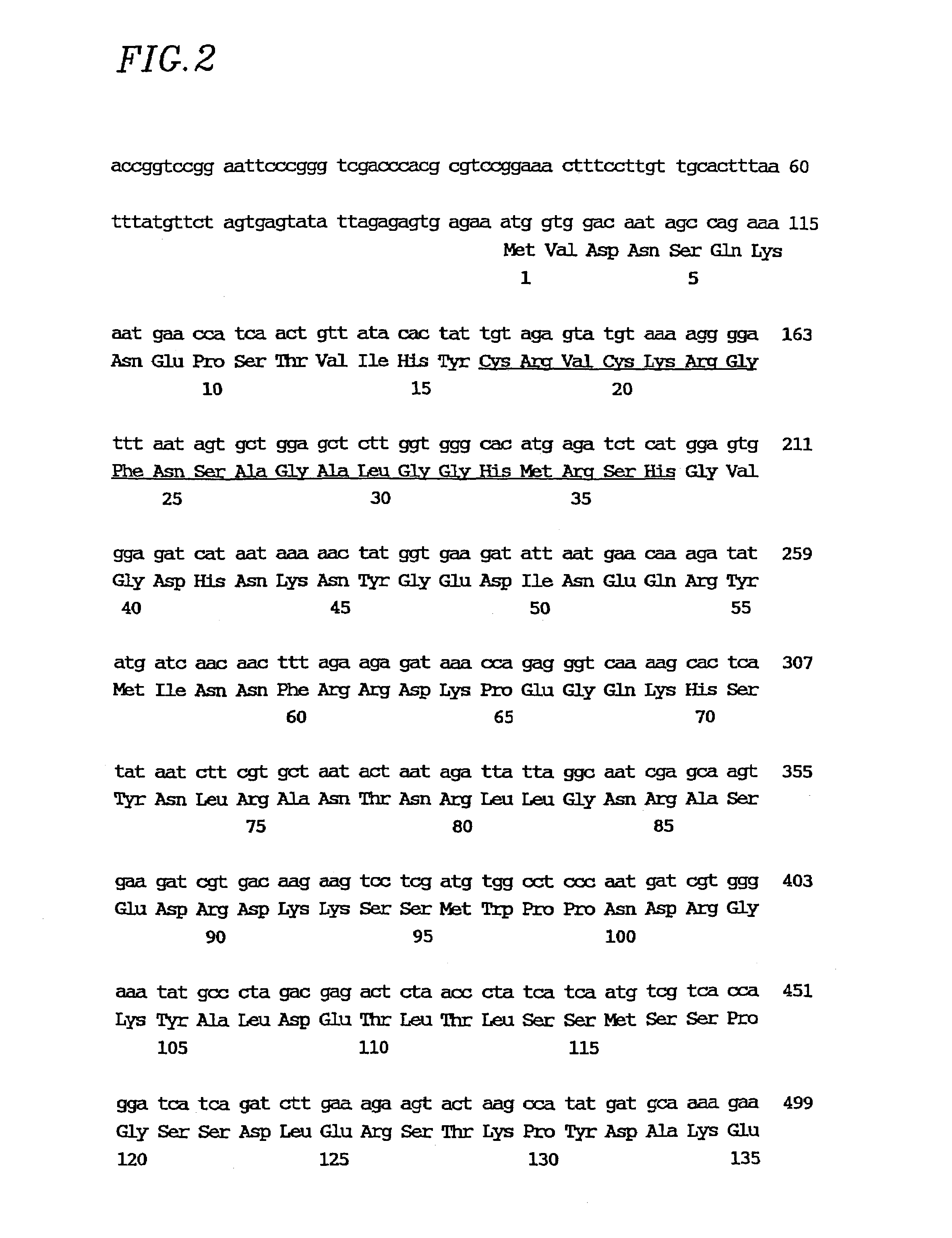Method of making male sterile petunia plants by transformation with a nucleic acid encoding a zinc finger transcriptional factor
a transcription factor and nucleic acid technology, applied in the field of genes, can solve the problems of increasing the cost of production, requiring enormous effort, and cytoplasmic sterility traits often accompanied by undesired side effects
- Summary
- Abstract
- Description
- Claims
- Application Information
AI Technical Summary
Benefits of technology
Problems solved by technology
Method used
Image
Examples
example 1
Construction of Plant Expression Vector Including Polynucleotide Encoding ZPT Transcription Factors
[0089]Out of the previously reported anther-specific ZF genes (Kobayashi et al., above), cDNAs of PEThy ZPT2-5 (ZPT2-5), PEThy ZPT3-1 (ZPT3-1), and PEThy ZPT4-1 (ZPT4-1) were each linked downstream of the 35S promoter of the cauliflower mosaic virus to prepare a plant expression vector. This preparation will be specifically described below.
example 1-1
[0090]DNA fragments including the cauliflower mosaic virus 35S promoter (HindIII-XbaI fragment) and DNA fragments including the NOS terminator (SacI-EcoRI fragment) in plasmid pBI221 (purchased from CLONTECH Laboratories Inc.) were successively inserted into the multi-cloning site of plasmid pUCAP (van Engelen, F. A. et al., Transgenic Res., 4:288, 1995) to prepare pUCAP35S. A pBluescript vector including cDNA of ZPT2-5 was cleaved at KpnI and SacI sites (either is a site within the vector), and inserted between KpnI and SacI sites of the above-described pUCAP35S. Further, this recombinant plasmid was cleaved with EcoRI and HindIII, and a DNA fragment encoding ZPT2-5 was inserted between EcoRI and HindIII sites of binary vector pBINPLUS (van Engelen, F. A. et al., above). As shown in FIG. 4(a), the constructed ZPT2-5 gene comprises the 35S promoter region (P35S; 0.9 kb) of cauliflower mosaic virus (CaMV), a polynucleotide (ZPT2-5; about 0.8 kb) encoding ZPT2-5 of the present inventi...
example 1-2
[0091]A pBluescript vector including cDNA of ZPT3-1 was cleaved at KpnI site and SacI site (either is a site within the vector), and inserted between KpnI and SacI sites of pUCAP35S. Further, this recombinant plasmid was cleaved with EcoRI and HindIII, and a DNA fragment encoding ZPT3-1 was introduced between EcoRI and HindIII sites of binary vector pBINPLUS. As is apparent from FIG. 4(b), the constructed ZPT3-1 gene comprises the 35S promoter region (P35S; 0.9 kb) of cauliflower mosaic virus (CaMV), a polynucleotide (ZPT3-1; about 1.7 kb) encoding ZPT3-1 of the present invention, and the terminator region (Tnos; 0.3 kb) of nopaline synthase.
PUM
| Property | Measurement | Unit |
|---|---|---|
| pH | aaaaa | aaaaa |
| size | aaaaa | aaaaa |
| disease resistance | aaaaa | aaaaa |
Abstract
Description
Claims
Application Information
 Login to View More
Login to View More - R&D
- Intellectual Property
- Life Sciences
- Materials
- Tech Scout
- Unparalleled Data Quality
- Higher Quality Content
- 60% Fewer Hallucinations
Browse by: Latest US Patents, China's latest patents, Technical Efficacy Thesaurus, Application Domain, Technology Topic, Popular Technical Reports.
© 2025 PatSnap. All rights reserved.Legal|Privacy policy|Modern Slavery Act Transparency Statement|Sitemap|About US| Contact US: help@patsnap.com



